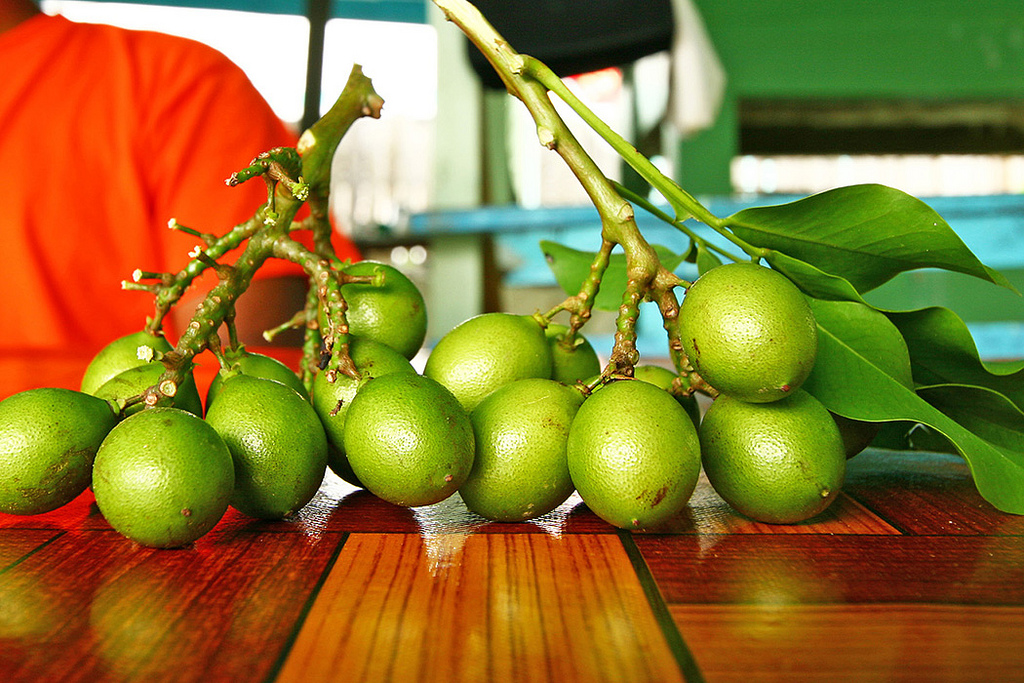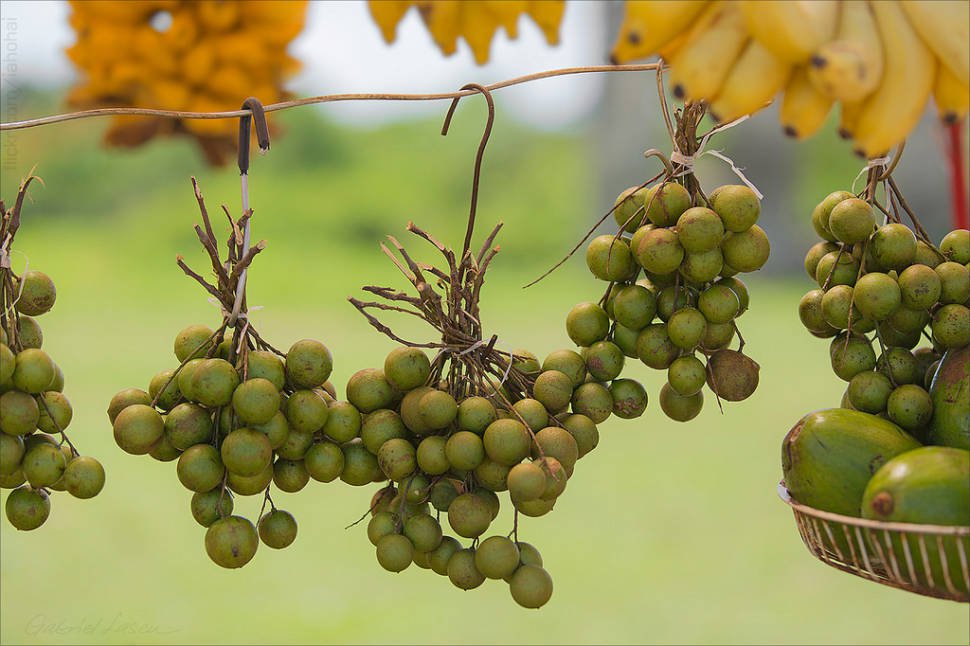Genip is spelt and pronounced differently in many countries and languages. For example, in St. Kitts it is called skinnip, it’s called skinup in Grenada, kenip in Dominica, chennette in Trinidad, and the list goes on. In Guyana, the people call it genip; what is a genip and what health benefits can it offer?

Genip | by KennardP
What Is A Genip?
Genip, Melicoccus bijugatus (Scientific name), is a fruit-bearing tree in the soapberry family Sapindaceae, bearing a yellow, sweet, edible fruit. It is a plant or fruit of the genus Genipa, especially Genipap. Genip is native or naturalized across the New World tropics including South and Central America, and parts of the Caribbean. Other names of the genip are spanish lime, ginepa, mammon and limoncillo.
What Are Some Health Benefits Of A Genip?
- Lowering Cholesterol and Preventing Constipation – Genip contains dietary fiber that is very helpful in reducing a high cholesterol level. Moreover, it contains low fat and no calories, thus it’s great for the body system. The dietary fiber and the pulp tissues can also be used for treating constipation by reducing colon transit time due to the presence of ferulic acid derivatives in the pulp extracts.
- Lowers Blood Pressure – Genip is full of antioxidants which plays an important role in reducing the damages in blood vessels caused by free radicals. Healthy blood vessel will make the heart put less efforts in pumping the blood, thus lowering blood pressure.
- Anti-Diabetic – Although genip is rich in sugar, the sugar is in fructose form, which is more difficult to absorb than simple glucose. Some researches claim that genip has protein substances which lower blood glucose level. The fibers also help prevent excessive sugar absorbed into the bloodstream.
- Better Sleep – Genip promotes good sleep. It contains the compound trytophan, which is said to induce sleep by stimulating the production of serotonin, which regulates mood levels, clearing the mind of anxiety and worry. It also has properties that calm and relaxes a person, and improves his mood.
- Healthy Bones and Teeth – Genip provides for the maintenance of healthy bones and teeth. Its calcium content is responsible for ensuring that the bones do not get brittle and provides for bone strength and durability, thus protecting the body from osteoporosis.
- Asthma Treatment – Genip pulp contains resveratrol derivatives and caffeic acid that relieves inflammatory reactions in patients suffering from asthma.

In Cuba the fruit is called ‘mamoncillos’. | Image source: https://rove.me/to/cuba/mamoncillo-season
Common Uses of Genip
- A dye has been experimentally made from the juice of the raw fruit which makes an indelible stain.
- The flowers are rich in nectar and highly appealing to hummingbirds and honeybees. The honey is somewhat dark in colour but of agreeable flavour. The tree is esteemed by Jamaican beekeepers though the flowering season (March/April) is short.
- In Panama, the leaves are scattered in houses where there are many fleas. It is claimed that the fleas are attracted to the leaves and are cast out with the swept-up foliage. Some believe that the leaves actually kill the flea
- The heartwood is yellow with dark lines, compact, hard, heavy, fine-grained; inclined to decay out of doors, but valued for rafters, indoor framing, and cabinetwork.
- In Venezuela, the astringent roasted seed kernels are pulverized, mixed with honey and given to halt diarrhoea. The astringent leaf decoction is given as an enema for intestinal complaints.
Nutrients Of A Genip
Calcium, Carbohydrates, Dietary Fiber, Iron, Magnesium, Manganese, Phenolic, Phosphorus, Potassium, Protein, Sodium, Tryptophan, Vitamin A, Vitamin B2 (Riboflavin), Vitamin B3 (Niacin), Vitamin B5 (Pantothenic Acid), Vitamin B6 (Pyridoxine), Vitamin B9 (Folates) and Vitamin C.
Did You Know?
The genip seed is edible and can be cooked; they can be roasted, crushed, and mixed with honey to sooth away diarrhea.
Scientific Classification Of A Genip
- Genip – Melicoccus bijugatus [Scientific name]
- Kingdom: Plantae
- Clade: Angiosperms
- Clade: Eudicots
- Clade: Rosids
- Order: Sapindales
- Family: Sapindaceae
- Genus: Melicoccus
- Species: M. bijugatus
Ways To Eat A Genip
Eating a genip is almost an art form.
- The fruit is served on a plate as picked from the tree: in grape-like clusters with some foliage.
- One by one, the fruit is plucked from its cluster and conveyed to the mouth, where the incisors are used to pierce the shell-like skin – which is similar to that of an avocado, but slightly more brittle – such that the incision by the teeth at the “equator” of the fruit causes the rind to partially split open, thereby revealing the succulent, peach-colored fruit. The consistency of a genip is perhaps best likened to a lychee, though the texture of the genip is smoother and glossier.
- Once the “shell” has been incised, the fruit is squeezed into the mouth and eaten by using the tongue and teeth to remove the pulp from its seed, which is almost the same size as the fruit. The riper the fruit, the easier its pulp will yield.
- When the seed has been eaten clean, it is skillfully released from the mouth back into the breached shell-skin, where the eaten-clean seed is discretely – and elegantly – concealed before being placed to the side of the plate.
The fruit can also be eaten with salt and pepper. By just reading this your mouth will salivate if you have had it with salt and pepper before.
Tip: Despite the light color of the fruit’s flesh, the juice stains a dark brown color, and was often used by indigenous Arawak natives to dye cloth.
Genip Season
Generally in Guyana, there is a season for everything. Genip season is the time of the year when genip is in its fruiting season (around May-August each year) and is most plentiful. In villages, it is common to find children selling genip in the streets.

Genip season: Children carrying home a tub-full of genips at Buxton, ECD yesterday (Photo by Arian Browne)
Genip In Guyana
Genip is also eaten with salt and pepper in Guyana; this is sold by many school canteens, in the market and by many vendors who pass on the street. The leaves of the tree can be boiled and made into a tea which is great for intestinal problems. The pulp of the genip fruit can also be made into a refreshing juice, a jam, sauce, and used in desserts. Genip can be enjoyed in a variety of ways and the best part is that it is healthy for you; there are many health benefits and nutrients to gain just by sitting back and by consuming some delicious genips!
Article References:
- https://globalfoodbook.com/incredible-benefits-of-the-genipe-fruit
- https://www.fruits.news/2017-08-15-genip-sources-health-benefits-nutrients-uses-and-constituents-at-naturalpedia-com.html
- http://www.guyanapremier.com/single-post/2017/08/15/6-Scientific-Health-Benefits-of-Genip
- https://www.womenfitness.net/healthBenefits_exoticFruits3.htm
- https://en.wikipedia.org/wiki/Melicoccus_bijugatus
- https://manlymanners.wordpress.com/tag/how-to-eat-genips-at-the-formal-dinner-table/
- http://corp.guardian.co.tt/world/2018-08-12/chennette-in-season







1 Comment